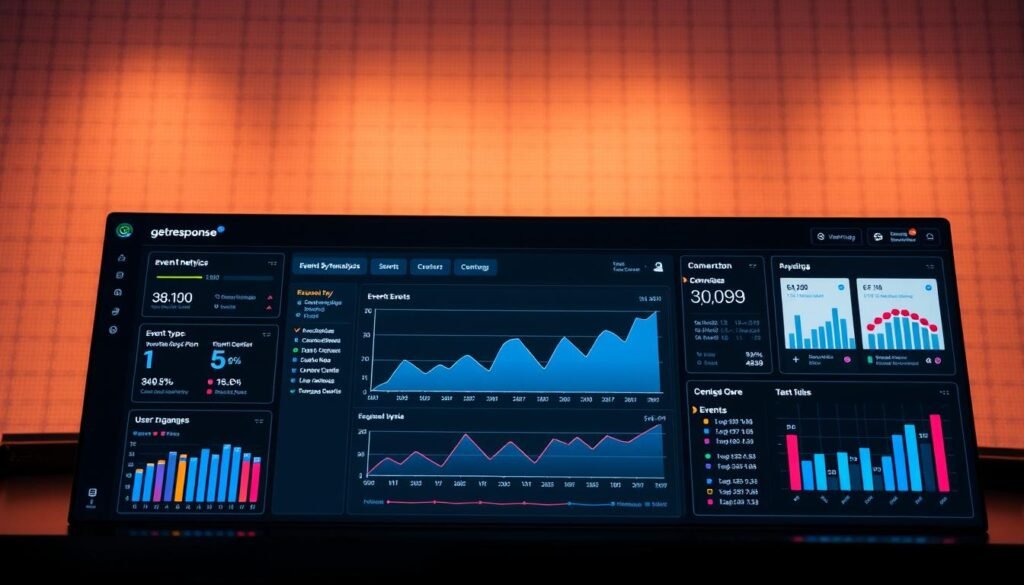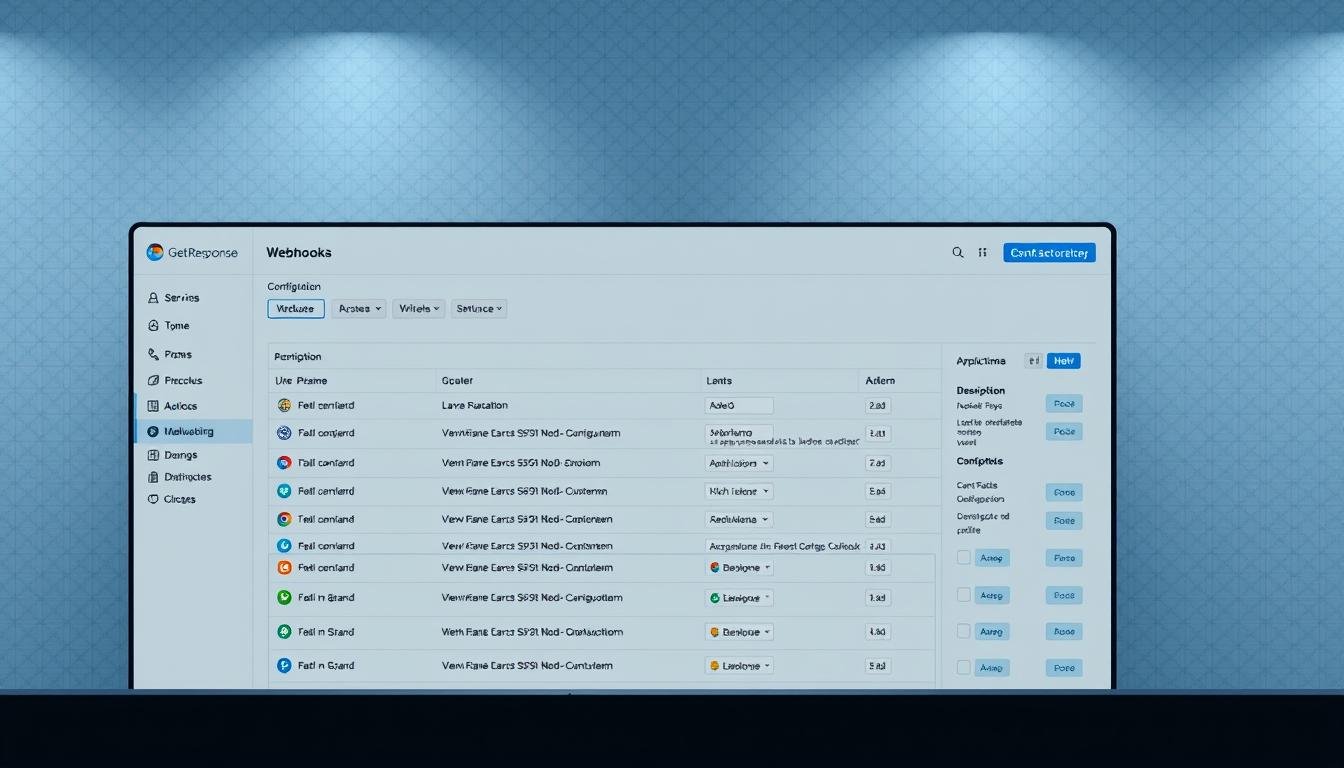You can stream real-time data from your email platform into apps and systems that run your marketing. This section shows how a webhook setup delivers a JSON payload to a unique URL so your tools receive context instantly, instead of polling.
When a tracked change happens, an HTTP request carries the details you need to act the same day. That request includes the payload and identifiers your platform reads to trigger workflows or update customer records.
In this blog, you will learn which events the service supports, how batching vs individual delivery affects latency, and what to check before you paste your destination URL. The aim is practical guidance marketers and developers can apply right away.
Key Takeaways
- You’ll see how real-time data reduces delay and powers same-day automation.
- Understand payload delivery via HTTP and why a unique URL matters.
- Learn supported events and when to choose batching or single requests.
- Know what to configure in the interface before you enable notifications.
- Use this guide to map fields, handle errors, and scale workflows.
Understand Webhooks Today: How Real-Time Events Power Marketing Automation
A webhook sends a POST payload the moment a meaningful action occurs, so your systems react without delay. In practice, one app issues an HTTP POST to a predefined unique url. The call carries a structured JSON payload that describes the event and the affected object.
What a webhook is and how it differs from polling APIs
A webhook is push-based. It posts an http request when something happens. By contrast, polling makes repeated requests at set intervals. Polling wastes cycles and can delay updates by minutes.
How webhooks send event payloads to a unique URL in real time
When the source triggers an action, it sends a single http request that includes the event type, timestamp, and identifiers. Your receiver validates the source, parses the payload, and applies business logic. Typical uses include CRM updates, campaign triggers, and analytics transfers.
- Why push matters: fresher data and fewer unnecessary requests.
- Reliability: expect retries and design idempotent handlers.
- Practical example: an order event can start a post-purchase flow in minutes.
| Aspect | Webhook | Polling |
|---|---|---|
| Delivery | Push to your URL instantly via HTTP POST | Periodic requests from your system to the source |
| Load on services | Lower overall load; targeted transfers | Higher load; many redundant requests |
| Latency | Near real time — seconds to minutes | Delayed — depends on polling interval |
Platforms like getresponse use webhooks so you can sync engagement signals across apps and systems. Design your receiver for idempotency and clear logging to make that real-time transfer dependable.
GetResponse Webhooks Event Catalog

Know which notifications fire and when—so you can route the right data to your systems. This section lists the notifications available and how they behave by default.
Email engagement: Message opened and link clicked
Track basic email engagement with message opened and link clicked. These notifications let you trigger follow-ups, update scores, or feed analytics in real time.
Subscriber lifecycle and contact changes
Receive notices when a contact is subscribed (not via imports), unsubscribed through an email link, copied between lists, or moved. Use these to keep suppression lists and CRM records in sync.
Data updates, list hygiene, and SMS
Get alerts for custom field value changes and when a contact’s email changes so personalization stays accurate.
List hygiene flows include bounced contact removed and contact import finished, which returns success or failure status.
For SMS-heavy programs on GetResponse MAX, an SMS link clicked notification enriches cross-channel activities.
Batching behavior: individual vs. batched requests
By default, each notification is sent as an individual http request. Enabling batching groups multiple messages into one payload to improve throughput for high-volume campaigns.
- Choose individual requests when order and immediate processing matter.
- Choose batching to reduce overhead when your services can accept larger http payloads and process many activities at once.
Set Up Webhooks in Your GetResponse Account
Start your webhook setup by opening the Webhooks screen and choosing Create webhook to begin wiring notifications to your systems.
Create webhook: Name, Webhook URL, and selecting events
Give the webhook a clear name that reflects its purpose. Paste the destination url — the unique url your receiver exposes — so the platform can send http payloads to your service.
Select the specific notifications you want. Picking only needed items reduces noise and simplifies downstream processing.
Activate status, enable batching, and save configuration
Toggle the status to Active so delivery starts immediately. If your endpoint handles one http call per activity, leave batching off. Enable batching if your integration can parse grouped payloads to reduce overhead.
Manage existing webhooks: View, edit, and delete via Actions
Go back to the Webhooks list to view configured items. Use the Actions icon to Edit or Delete hooks as requirements change.
| Task | When | Why |
|---|---|---|
| Endpoint authentication | Before enabling Active | Protects incoming http requests and stops abuse |
| Field mapping | During setup | Ensures payload fields match your data model |
| Daily delivery check | First week of rollout | Catch retries and adjust retry rules |
Document these tasks so your team can maintain the configuration and keep work predictable day to day.
High-Impact Ways to Use Webhooks with GetResponse

Automating subscriber updates lets you keep lists clean and campaigns targeted without manual steps. Use push triggers to add or update a subscriber the moment they register or convert. That keeps your contact records accurate and reduces churn from stale data.
Automated subscriber management across platforms
Connect signups, CRM records, and commerce platforms so a new subscriber is written to the right list instantly. This synchronization prevents duplicates and keeps your suppression logic intact.
Event-triggered email campaigns after purchases or actions
Launch a campaign flow after checkout to send confirmations and tailored cross-sells for related products. Timely messages drive repeat buys and improve customer lifetime value.
Real-time data sync for accurate personalization
When a user updates preferences, a push refreshes contact attributes before the next send. That keeps personalization relevant and increases engagement.
Transactional notifications: Order confirmations and password resets
Send critical transactional email messages immediately. Order confirmations, shipping notices, and password resets must reach the customer fast and reliably.
Lead scoring updates based on activities and engagement
Adjust scores on page depth, demo requests, or email opens and route contacts into workflows or to sales automatically. This keeps your pipeline current and actionable.
- Orchestrate omnichannel campaigns: chain integrations so commerce, support, and analytics stay aligned through a single integration layer.
- Enrich and resolve identities: connect microservices to ensure campaign logic targets the correct contact every time.
- Measure lift: compare campaign performance before and after automation to prove marketing impact with defensible metrics.
For guidance on contact rules and limits that affect subscriber flows, review contact management restrictions before you deploy integrations: contact management restrictions.
Technical Best Practices: Payloads, HTTP Requests, and Integrations
Designing a resilient receiver starts with clear rules for parsing and validating every incoming HTTP payload. Define a strict schema, map fields to your system, and fail fast on malformed data. Keep mapping logic predictable so downstream workflows behave the same every time.
Make handlers idempotent. Retries can deliver duplicate requests. Ensure repeated processing does not create duplicate records or retrigger workflows. Use stable keys from the payload to dedupe operations.
Keep endpoints responsive: return a quick 2xx acknowledgement within minutes and push heavy processing to background jobs. For high throughput, accept both individual and batched deliveries and iterate events inside a single request.
Manage latency and retries with bounded queues and exponential backoff for outbound calls. Monitor failure rates and use dead-letter queues with clear playbooks so teams can restore transfer flows fast.
Secure your URL. Terminate TLS, require secrets or signed headers, restrict source IPs where practical, and rotate keys on a set cadence. Log verification results to make audits and incident response straightforward.
| Focus | Best Practice | Why it matters |
|---|---|---|
| Payload handling | Deterministic parsing & field mapping | Prevents data drift in systems |
| Reliability | Idempotency & quick 2xx ack | Stops duplicates and reduces retries |
| Security | TLS, tokens, IP filters | Protects your unique url and services |
Conclusion
You can close the loop between user actions and automated flows in minutes, not days. Connect your getresponse setup to a reliable webhook receiver, verify the url and logging, then enable batching only if your system can handle grouped requests.
In your getresponse account, create, activate, and tune delivery to match throughput. Test field mapping, retries, and security before wide rollout to reduce surprises.
Tie outcomes to marketing goals: faster workflows, cleaner management across tools, and measurable lifts in email campaigns and revenue. Use this blog as a checklist for tasks, examples, and a short internal video to align teams.
Keep synchronization checks and schedule a maintenance day to test failover. As you add integrations and products, expand workflows thoughtfully to maintain reliability while you scale your platform and work.

